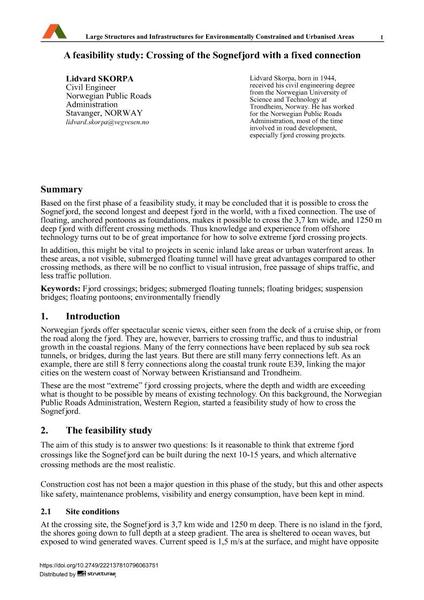A feasibility study: Crossing of the Sognefjord with a fixed connection

|
|
|||||||||||
Bibliografische Angaben
| Autor(en): |
Lidvard Skorpa
|
||||
|---|---|---|---|---|---|
| Medium: | Tagungsbeitrag | ||||
| Sprache(n): | Englisch | ||||
| Tagung: | IABSE Symposium: Large Structures and Infrastructures for Environmentally Constrained and Urbanised Areas, Venice, Italy, 22-24 September 2010 | ||||
| Veröffentlicht in: | IABSE Symposium Venice 2010 | ||||
|
|||||
| Seite(n): | 760-761 | ||||
| Anzahl der Seiten (im PDF): | 7 | ||||
| Jahr: | 2010 | ||||
| DOI: | 10.2749/222137810796063751 | ||||
| Abstrakt: |
Based on the first phase of a feasibility study, it may be concluded that it is possible to cross the Sognefjord, the second longest and deepest fjord in the world, with a fixed connection. The use of floating, anchored pontoons as foundations, makes it possible to cross the 3,7 km wide, and 1250 m deep fjord with different crossing methods. Thus knowledge and experience from offshore technology turns out to be of great importance for how to solve extreme fjord crossing projects. In addition, this might be vital to projects in scenic inland lake areas or urban waterfront areas. In these areas, a not visible, submerged floating tunnel will have great advantages compared to other crossing methods, as there will be no conflict to visual intrusion, free passage of ships traffic, and less traffic pollution. |
||||
| Stichwörter: |
Brücken
|
||||
